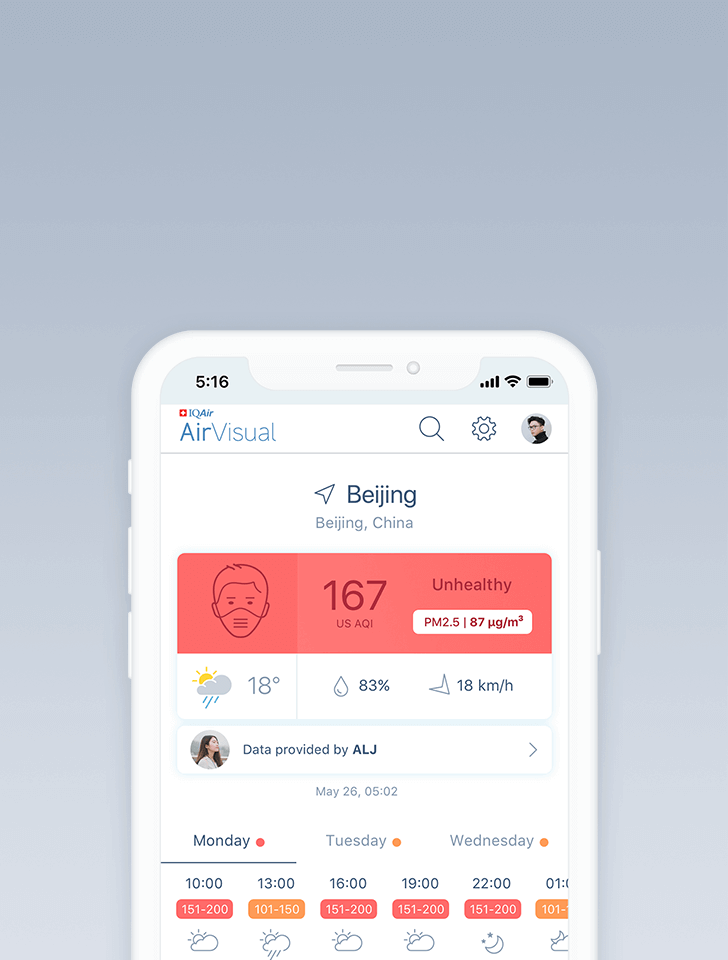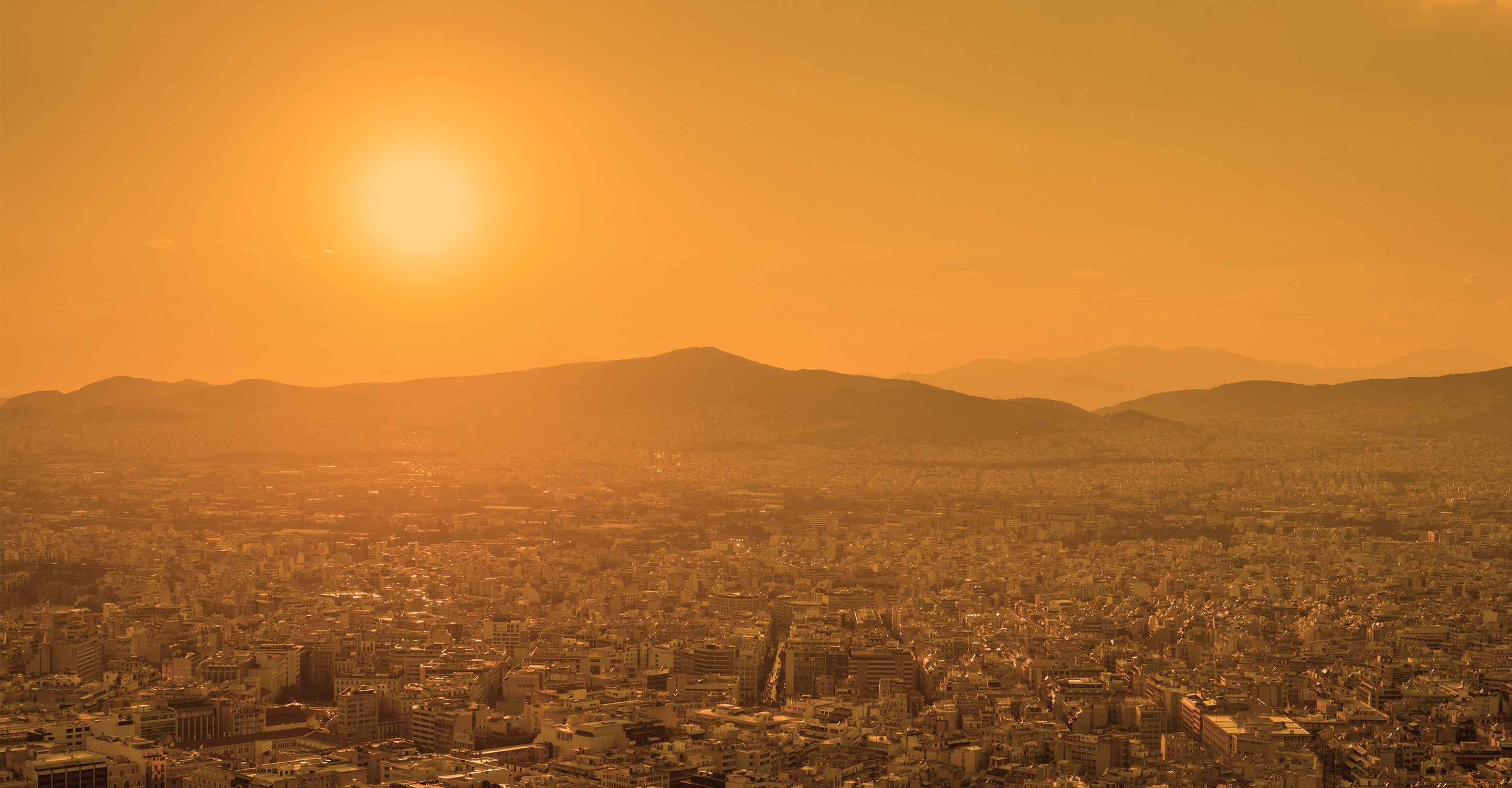Air quality in Zaozhuang
Air quality index (AQI) and PM2.5 air pollution in Zaozhuang
18.9K people follow this city

Zaozhuang Air Quality Map
Real-time Zaozhuang air pollution map
Weather
What is the current weather in Zaozhuang?
| Weather | Rain |
| Temperature | 66.2°F |
| Humidity | 76% |
| Wind | 6.9 mp/h |
| Pressure | 29.7 Hg |
live aqi city ranking
Real-time China city ranking
| # | city | US AQI |
|---|---|---|
| 1 | Jinzhong, Shanxi | 188 |
| 2 | Zhangye, Gansu | 188 |
| 3 | Jilin, Jilin | 170 |
| 4 | Jiayuguan, Gansu | 168 |
| 5 | Fangshan, Beijing | 159 |
| 6 | Xixiang, Henan | 159 |
| 7 | Beijing, Beijing | 156 |
| 8 | Caidian, Hubei | 155 |
| 9 | Changping, Beijing | 155 |
| 10 | Dingzhou, Hebei | 155 |
(local time)
SEE WORLD AQI RANKING3D animated air pollution map

live Zaozhuang aqi ranking
Real-time Zaozhuang air quality ranking
| # | station | US AQI |
|---|---|---|
| 1 | Shanting District Environmental Protection Bureau | 93 |
| 2 | Xuecheng Environmental Protection Bureau | 93 |
| 3 | Jiawangzhen | 88 |
| 4 | Daquan Jiedao | 78 |
| 5 | City Central Government | 74 |
| 6 | Yucheng District Government | 72 |
| 7 | Taierzhuang District Environmental Protection Bureau | 61 |
(local time)
SEE WORLD AQI RANKINGUS AQI
75
live AQI index
Moderate
Overview
What is the current air quality in Zaozhuang?
| Air pollution level | Air quality index | Main pollutant |
|---|---|---|
| Moderate | 75 US AQI | PM2.5 |
| Pollutants | Concentration | |
|---|---|---|
| PM2.5 | 23.5µg/m³ | |
| PM10 | 70.5µg/m³ | |
| O3 | 178µg/m³ | |
| NO2 | 28µg/m³ | |
| SO2 | 9µg/m³ | |
| CO | 600µg/m³ | |
PM2.5
x4.7
PM2.5 concentration in Zaozhuang is currently 4.7 times the WHO annual air quality guideline value
Health Recommendations
What is the current air quality in Zaozhuang?
| Sensitive groups should reduce outdoor exercise | |
| Close your windows to avoid dirty outdoor air GET A MONITOR | |
| Sensitive groups should wear a mask outdoors GET A MASK | |
| Sensitive groups should run an air purifier GET AN AIR PURIFIER |
Forecast
Zaozhuang air quality index (AQI) forecast
| Day | Pollution level | Weather | Temperature | Wind |
|---|---|---|---|---|
| Tuesday, Apr 23 | Moderate 100 AQI US | 73.4° 53.6° | ||
| Wednesday, Apr 24 | Moderate 99 AQI US | 78.8° 51.8° | ||
| Thursday, Apr 25 | Unhealthy for sensitive groups 103 AQI US | 80.6° 53.6° | ||
| Today | Moderate 75 AQI US | 80.6° 55.4° | ||
| Saturday, Apr 27 | Moderate 77 AQI US | 80.6° 51.8° | ||
| Sunday, Apr 28 | Moderate 65 AQI US | 71.6° 55.4° | ||
| Monday, Apr 29 | Moderate 80 AQI US | 78.8° 55.4° | ||
| Tuesday, Apr 30 | Moderate 81 AQI US | 62.6° 53.6° | ||
| Wednesday, May 1 | Moderate 67 AQI US | 77° 50° | ||
| Thursday, May 2 | Moderate 63 AQI US | 75.2° 55.4° |
Interested in hourly forecast? Get the app
AIR QUALITY ANALYSIS AND STATISTICS FOR Zaozhuang
Does Zaozhuang have a bad level of air pollution?
Zaozhuang is a city in southern Shandong province, a coastal area that itself is part of the eastern China region. As can be seen from both past and present readings, Zaozhuang has some rather poor levels of air quality, so much so that it would severely impact the lives of its citizens. Whilst measures are being implemented in more recent times in order to curb these inescapable smog and haze clouds that permeate the city, it still stands to reason that much of the city’s pollution levels are still far above what is considered safe.
Looking at the air quality recorded in late April of 2021, it can be seen that Zaozhuang came in with a US AQI reading of 78, placing it in the ‘moderate’ air pollution bracket. Whilst this reading is within reasonable terms, one need only look at the surrounding days to see that this moderate reading of air pollution can quickly spike up to some extreme readings of US AQI. These days recorded over both March and April displayed readings as high as 292, classifying that particular day as ‘very unhealthy’, indicating that the air would be filled with all manner of toxic chemical compounds and hazardous particulate matter.
Zaozhuang seems to be subject to some rather sporadic readings on the US AQI chart (a composite measure that takes into account many different types of air pollution, such as PM2.5, PM10, ozone and a few more). Readings as low as 64 were on record, with many days coming in with this moderate rating of air pollution. To counter that, and remove any notion of permanent air quality safety, the readings can quickly skyrocket up to both ‘unhealthy’ and ‘very unhealthy’ levels of US AQI, with many days also coming in with readings of 155 and above.
Preventative measures such as the wearing of high quality particle filtering masks, as well as staying indoors on days of high pollution (which can be tracked using air quality maps such as the one present on this page, or the AirVisual app) should be utilized, although in an ideal situation the air quality would see massive improvements as opposed to the people adapting to live with such high levels of pollution, which are extremely damaging to the health of the general population.
Why is Zaozhuang’s air so polluted?
In 2020, Zaozhuang was seen to have a yearly average PM2.5 reading of 54.8 μg/m³, placing it just within the ‘unhealthy for sensitive groups’ bracket, which requires a PM2.5 reading of anywhere between 35.5 to 55.4 μg/m³ to be classified as such. This placed the city in 15th place out of all cities ranked in China, as well as in 65th place out of all cities ranked worldwide.
This is a very high placing, being amongst the top most polluted cities in the world as of 2020 (with air quality that still continues to breach safe limits). The cause of these high levels of pollution are ones that typically arise from the various combustion sources taking place across the city, and with its heavy industrialization (and thus a large reliance and overuse of fossil fuels such as coal, as well as natural gas and diesel), Zaozhuang as a result has its air badly contaminated from these offending sources.
Other causes of pollution that compound the situation further would be ones emanating from vehicles, both regular ones such as cars and motorbikes, as well as heavy duty or freight vehicles such as lorries and trucks. Both of these can emit large amounts of pollution via their exhaust, which contains both harmful chemical compounds and fine particulate matter (PM2.5). However, it still remains to be seen that the majority of the city’s pollution comes from these industrial areas, causing the vast clouds of smog and other air contaminants to accumulate and have such a negative impact on daily life.
When is the air quality at its most polluted in Zaozhuang?
As with many cities across the globe, there are periods of time in which pollution levels can climb even higher, causing previous appreciable readings to vanish and the city to enter into a highly dangerous time frame. Looking at the data gathered over the course of 2020 as a concise measure, it can be seen that the months at both the beginning and end of the year were when pollution levels were at an all-time high.
This indicates a pattern whereby the pollution levels start to rise at years end, and continue to stay elevated into the early months of the following year, before abating slowly to slightly more appreciable levels (with meteorological conditions such as strong prevailing winds aiding greatly in the removal of said pollution).
To quote some of these poorer months and their high levels of PM2.5, October is when the air quality started to take a turn for the worst (as is common across many cities in China). September came in with a reading of 37.9 μg/m³, which quickly rose up to 50.8 μg/m³ in October, and then up to ‘unhealthy’ levels of air pollution in November and December with readings of 65 μg/m³ and 96.6 μg/m³ respectively.
The highest readings were seen at the beginning of the year, with January coming in with a dangerous reading of 102.9 μg/m³. After this the air pollution levels started to drop rapidly, with readings that will be discussed in short.
When does Zaozhuang have better air quality?
As mentioned, there are periods of time in which stronger winds can blow the harmful buildups of pollution and particulate matter out of the city (although it still remains highly polluted when compared to cleaner cities around the world).
The months of May through to September had the cleanest levels of air quality, never going above the ‘unhealthy for sensitive groups bracket’. The cleanest month of the year was August (once again a common theme in many of China’s more polluted cities), with a reading of 28.1 μg/m³ that placed it within the ‘moderate’ ratings bracket, the only month of the year to achieve this rating.
What are the main pollutants that are found in the air in Zaozhuang?
Some of the main pollutants would be ones that typically arise from all manner of combustion sources, be it boilers in factories and power plants going through large amounts of coal, to vehicle engines. These give off large amounts of pollutants such as nitrogen dioxide (NO2) and sulfur dioxide (SO2), as well as particulate matter such as black carbon, and volatile organic compounds (VOCs).
Some examples of VOCs include chemicals such as benzene, toluene, styrene and formaldehyde. As touched on before, ozone (O3) would also be very prominent, typically forming as a secondary pollutant as a result of other chemicals or gases reacting in the atmosphere, causing the formation of ozone, or smog as it is known when it has accumulated in large amounts.





